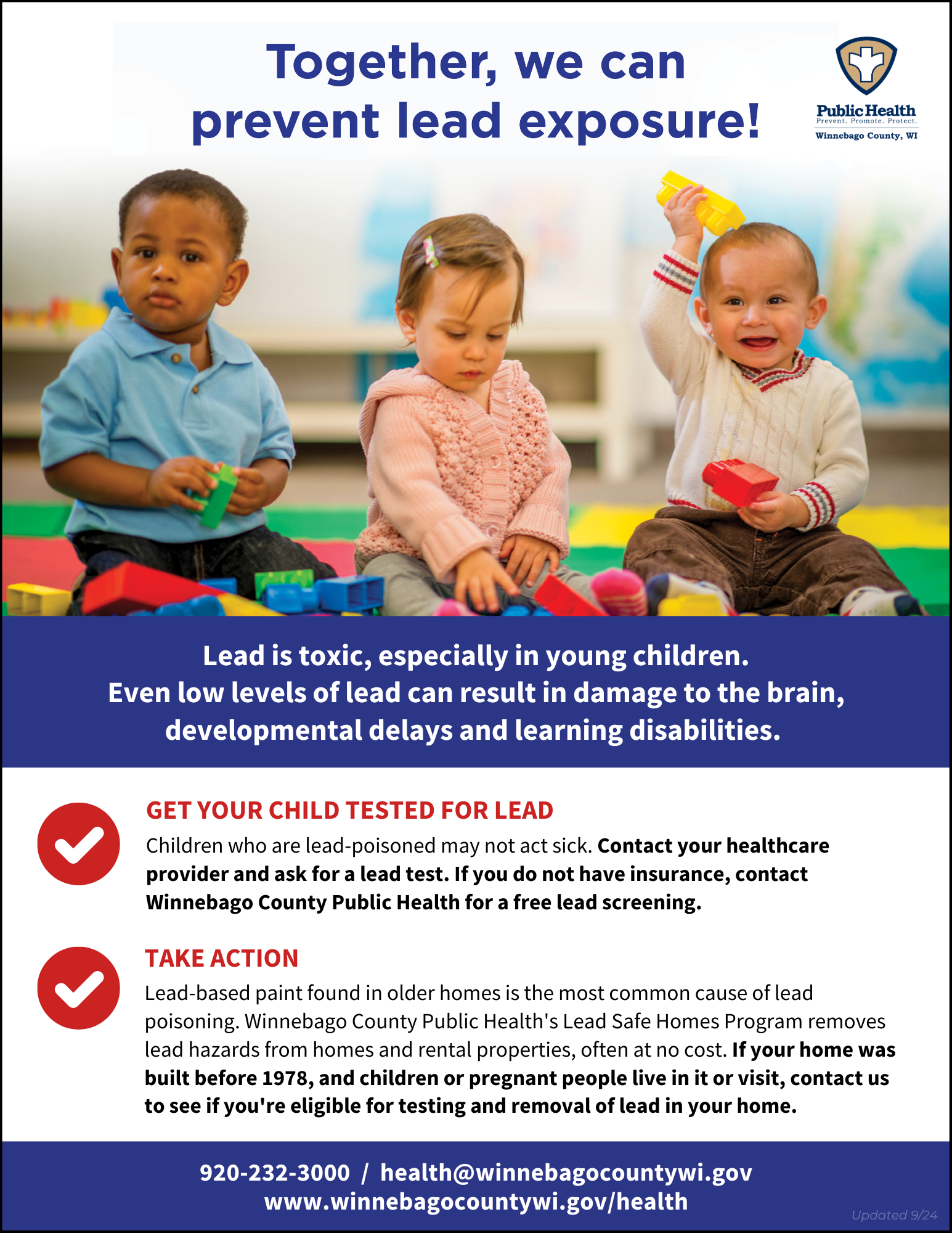No safe level of lead in children has been identified. Even low levels of lead in blood can hurt a child’s ability to learn, pay attention, and do well in school. A blood test is the best way to determine if a child has been exposed to lead. Based on blood lead test results, healthcare providers and public health staff can recommend follow-up actions and care. Winnebago County Public Health recommends that all children be tested at least 3 times before the age of 3.
How is testing done for lead exposure? 
A blood lead test is the best way to find out if a child has lead poisoning. During a blood lead test, a small amount of blood is taken from the finger, heel, or arm and tested for lead.
Where can I get my child tested?
Your child’s primary healthcare provider should test for lead exposure. Many private insurance policies cover the cost of testing for lead in the blood. Testing for children enrolled in Medicaid is required and paid for by Medicaid.
Winnebago County Public Health offers lead screening to those who are eligible during our Parent Resource Hours. Please call at 920-232-3000 or email health@winnebagocountywi.gov to learn more about eligibility and schedule a screening.
What does my child's screening results mean?
When you get the test results, ask the provider specifically what the test value is (instead of “normal” or “abnormal”). Any lead in the blood should be taken seriously.
A result less than 3.5 µg/dL: No medical management is needed.
A result at or above 3.5 µg/dL: This is considered elevated. Your primary care provider should be contacted for further steps.
Learn more about the CDC's blood lead reference values
What if my child has elevated lead?
If an initial test shows an elevated blood lead level, work with your doctor to find the best treatment for your child. This may include additional screenings and developmental assessments. In addition, there are things you can do at home, including:
- Removing lead hazards from a child’s environment.
- Winnebago County Public Health's Lead-Safe Homes Program helps keep kids safe from the dangers of lead poisoning by providing the safe removal of lead from qualified homes and rental properties.
- Removing children from the source of lead exposure.
- Give your children healthy, low-fat foods that are high in calcium, iron, and vitamin C, all of which have been shown to reduce lead absorption in children. Poor nutrition, especially calcium and iron deficiency, is associated with increased lead absorption, retention, and toxicity.
- Monitoring the child’s blood lead level over time to make sure the level decreases.


